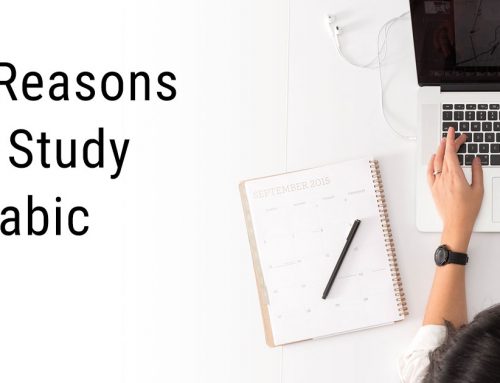As you’ll probably find when learning Arabic, it is a unique language. It can be one of the most challenging languages to learn without the right courses and resources. It is also one of the oldest languages, having existed since the 9th century BC. Today, Arabic is spoken by more than 400 million people and is the official language of 29 countries.
Since the time of its creation, it has had time to develop unique characteristics that set it apart from other languages of the world.
Here are some surprising facts about the Arabic language that you may not have known:
Arabic has different forms depending on the context in which it’s used.
Standard or classical Arabic is the form of the language used in media, newspapers, literature and most formal settings. A different, distinct spoken form of Arabic is used in ordinary, everyday conversation. Both forms are used in conjunction with one another, serving unique and different functions and purposes in society.
Arabic uses roots to construct words.
Arabic has an unusual root system consisting of three letters. Every word with the same three root letters can then be categorized into similar areas. For example, the root ‘k-t-b’ refers to writing. The words ‘kitaab’ and ‘maktab’ both contain the letters (or root) ‘k-t-b’ and mean ‘book’ and ‘a desk or office’ respectively.
There are 11 words for ‘love’ and over 100 words for ‘camel’.
There are 11 words for ‘love’ in Arabic, with each conveying a different stage in a relationship or the falling in love process. These words include ‘hawa’ which is the initial attraction towards, or turning towards and ‘hayam’ which is blind love and the complete loss of reason. The most common words for love are ‘hubb’ which means ‘seed’ and ‘qalb’ which means ‘heart.’
Arabic has over 100 words for ‘camel’ which at one point had as many as 1,000 words. ‘Al-Jafool,’ for example is a camel that is frightened by anything and ‘al-harib’ is a female camel that walks ahead of the other camels.
Arabic has sounds that don’t exist in other languages.
The Arabic language has many sounds, such as specific throat sounds that don’t exist in any other languages. Some words in Arabic are very similar in pronunciation, but have completely different meanings when just one syllable is mispronounced. ‘Qalb,’ for instance means heart, but if heard or spoken wrong, it can mean something dramatically different, like ‘kalb,’ which means dog. An example of a unique sound is the ‘h’ in ‘hubb (word for love) which is pronounced as if you’re gently breathing on a window pane to create mist.
Some of the unique throat sounds found in Arabic include: the pronunciation of Haa, a guttural breath that’s only found in Arabic, Ayn and Ghayn and kha, which is like the clearing of the throat.
Many words in English have Arabic origins.
There are many common words in English that have Arabic origins. These words include: racquet, alchemy, alcohol, algebra, algorithm, alkaline, amber, arsenal, candy, coffee, cotton, hazard, lemon, loofah, magazine, sherbet, sofa, sugar and tariff
Even the number system we use was introduced by Arab merchants to Europeans along trade routes centuries ago.
Capitalization and abbreviation don’t exist in Arabic.
Arabic speakers also don’t use contractions to combine two words.
Arabic uses the same punctuation that is in English, but the symbols are inverted.
Since Arabic is read from right to left, the punctuation is also inverted. For example, in English, you’ll see , (comma), ? (question mark) and ”“ (quote marks). The same in Arabic looks like ، ؟ . “”
Arabic is only written in cursive.
Whether writing or typing in Arabic, the letters are in cursive and connect to one another. The cursive style of each letter changes it from its original shape. Arabic speakers, therefore must know multiple shapes of each letter.
The Arabic language is indeed a unique one. If you want to learn this valuable language, sign up for an effective Arabic course today!





